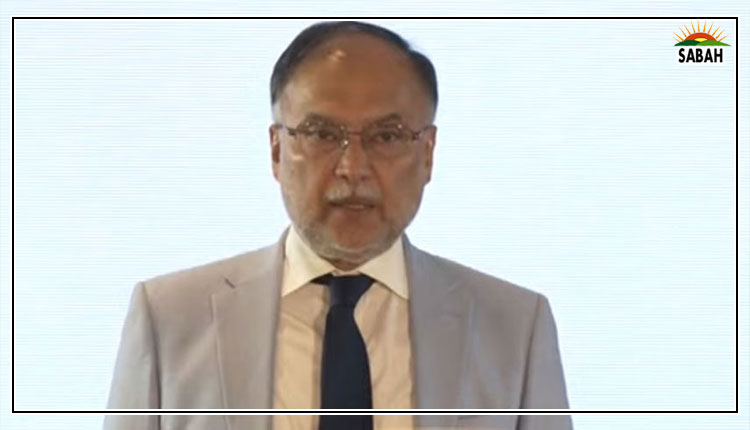Too many people…Rafia Zakaria
A FEW weeks ago, India reached the dubious milestone of becoming the most populous country in the world. According to the UN estimates, Indias population reached 1.4 billion in late April, overtaking Chinas figures which used to be the highest in the world.
India would like to beat China in every competition. However, winning this particular competition is not a triumph. In 1971, the population figures for India and China were almost the same. But different population policies pursued by the two countries meant that while Chinas population fell to three births per woman by the end of that decade, it took India over three decades to see the same reduction in births per woman.
A large population is not necessarily a bad thing. As many experts have pointed out, the Industrial Revolution was spurred in part by a large growth in the population of Western countries. These new workers were absorbed into the transforming economy of countries such as Britain as they changed raw materials taken from the colonies into manufactured goods. The problem in Indias case is that although its economy is expected to grow, it is not going to grow at a rate that is fast enough to absorb all young workers that are going to need jobs soon. Indias focus on business processing in the information economy means that it simply does not have the vibrant manufacturing sector that China has used to propel itself into a manufacturing giant.
It is not that the current population rates of the two countries are not declining. China is already an aging population with only 1.2 births per woman. Indias fertility rate is two births per woman which is a little below the replacement rate of 2.1 births per woman, according to the UN. This rate means that in future, India may lose the status of producing the most workers for the world as it does now. Countries like Nigeria and Congo are expected to overtake South Asia in producing more and more of the worlds workers.
It is inevitable that ever more acute natural disasters and lack of means to earn a livelihood in their own countries will drive people to Western shores.
India and China used different policies to curb population growth. Chinas one-child policy was scrapped in 2016 but the strictness with which it was applied when it was in effect means that there has been a cultural impact on the population. There was a push for families adopting the later, longer, fewer policy in the 1970s. This stood for women having children later in life, with longer intervals between children and fewer children overall. Things got stricter when the one-child policy was introduced in 1980. The consequence of the success achieved through this approach meant that people no longer had large families. This means that in the coming years, China will have a huge aging population but not necessarily enough young people who can pay into the system to sustain their older population.
Around the time that India was recognised as the most populous nation in the world, the German news magazine Der Spiegel published a cartoon showing a Chinese bullet train being overtaken by an old Indian locomotive, with people spilling out and riding on the roof. The cartoon was poking fun at India which has an aging rail system and where people even in large cities have to ride in decrepit trains that are slow and intensely crowded. This is different from China where a successful network of bullet trains has made it very easy for people to travel between cities and from rural areas to urban centres. The cartoon offended a large section of Indians to such an extent that lawmakers took to Twitter to point out that the West always likes to depict India as poor and struggling. The magazine was roundly criticised for adopting a racist tone.
These reports of changing demographics reveal the sources of the worlds population in the decades to come. Together, India and China now make up more than one-third of the worlds population. By mid-century, it is forecast that countries like Pakistan, Egypt, Congo, Nigeria, India and Tanzania will make up all the growth in the worlds population.
This represents a challenge to the global economy and current patterns of migration. It is inevitable that ever more acute natural disasters caused by climate change and lack of means to earn a livelihood in their own countries will drive people to Western shores by any means necessary. Fortress Europe and a border-wall United States will continue having to deal with large numbers of migrants arriving at their shores because there is no reliable means of survival in the countries where they live.
In a rational world, some of the excess population of poorer countries without an adequate number of jobs would be able to migrate to countries in Europe where growth has slowed to such an extent that there are not enough young people working to support benefits paid to older people. While some migrants are accepted in places such as Germany, the anti-immigrant fervour that has propelled far-right and anti-immigrant parties into power in most European countries suggests that this is not what the populations in these countries have in mind. The consequences of the poor outnumbering the rich is going to define the shape of the world that will emerge in 2050.
The good news for India and China, who are members of the billion club with their enormous populations, is that in both cases the growth rate is falling and thus their numbers will not be increasing at the rate that earned them the dubious honour of being the most populous countries in the world. The question for them (and for Pakistan whose own population bomb is ticking away) is how a billion people are to be governed and given some semblance of a tolerable existence.
Courtesy Dawn












